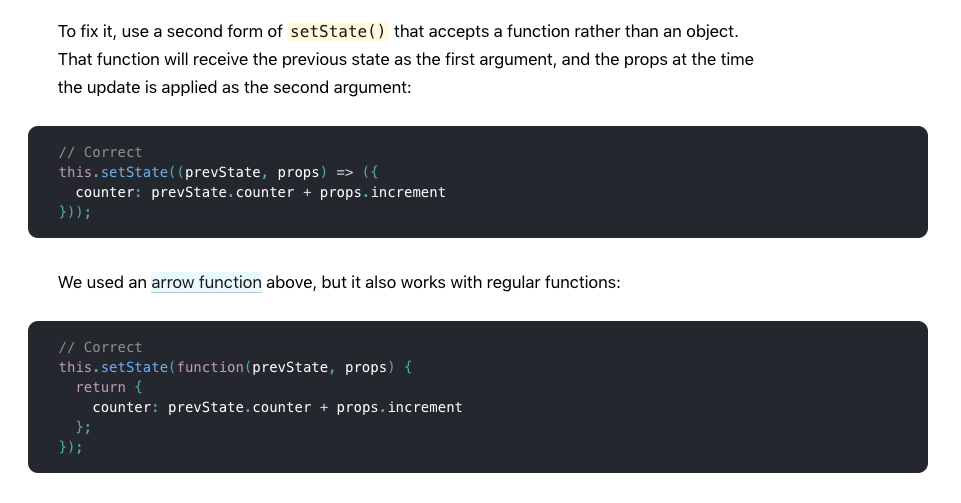I had a simple enough problem to solve: Create a counter that increments, decrements, and resets in React.
Of course with people looking over my shoulder while I am coding I often don’t create things that I am particularly proud of, but generally I get working code.
Here is a slightly cleaned up version of what I came up with:
See the Pen Simple React Counter by Thomas Nicolosi (@teeehn) on CodePen.
It works, but surely it could be simpler and better with fewer lines of code. I thought I could focus on the handleClick method for improvement:
handleClick (action) {
let newCount = this.state.count;
switch (action) {
case 'increment':
newCount += 1;
break;
case 'decrement':
newCount -= 1;
break;
default:
newCount = 0;
break;
}
this.setState({
count: newCount
});
}
Yeah, that is pretty verbose. I probably don’t need that newCount variable and that switch statement logic seems like overkill.
Because this is a really simple and common example, with a quick search I was able to find some inspiration from a github comment. This prompted me to take a fresh look at the setState API in React.
I learned something which might already have been obvious to many other React developers, but was new to me: there exists a second form of setState which is tied to the React component life cycle. In particular:

Once I saw this I realized that there was an opportunity to improve my solution, knocking out several lines of code and at the same time making it more flexible. Here’s is what I came up with using the form of setState which accepts a function and the previousState as an argument:
See the Pen Simpler React Counter by Thomas Nicolosi (@teeehn) on CodePen.
My improved handleClick method is simpler and also allows me to pass a variable increment:
handleClick (increment) {
this.setState((previousState) => {
return {
count: increment ? previousState.count + increment : 0
}
});
}
Pretty cool I think!
While this might not be impressive to many, I was able to extract some new information by questioning my experience and assumptions. I had always used the form of setState where I would pass an object or an object and a call back. By going back and reviewing the fundamentals I was able to take a fresh look at what I was doing and as a result gained some valuable knowledge.
If someone recognizes a way I can improve this even further please let me know in the comments! Thanks for reading.
